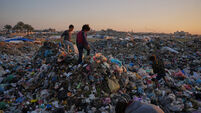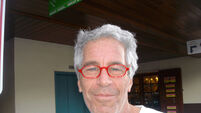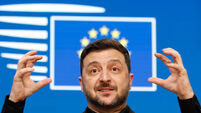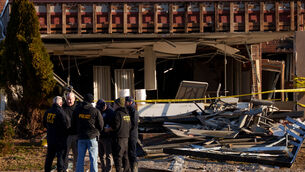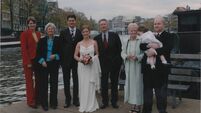Files show Sadam's frustration over WMD hunt
Exasperated, besieged by global pressure, Saddam Hussein and top aides searched for ways in the 1990s to prove to the world they had given up banned weapons, according to newly-released documents.
“We don’t have anything hidden!” a frustrated Iraqi president interjected at one meeting, transcripts show.
At another, in 1996, he wondered whether United Nations inspectors would “roam Iraq for 50 years” in a pointless hunt for weapons of mass destruction.
“When is this going to end?” he asked.
It ended in 2004, when US experts, after an exhaustive investigation, concluded that the men in those meetings were telling the truth, that Iraq had eliminated its weapons of mass destruction long ago, a finding that discredited the Bush administration’s stated rationale for invading Iraq in 2003 – to find WMD.
The documents are among US government translations of audiotapes or Arabic-language transcripts from top-level Iraqi meetings – dating from around 1996-97 back to the period soon after the 1991 Gulf War, when the UN Security Council sent inspectors to disarm Iraq.
Even as the documents make clear that Saddam’s regime had given up banned weapons, they also attest to its continued secretiveness: A 1997 document from Iraqi intelligence instructed agencies to keep confidential files away from UN teams, and to remove “any forbidden equipment”.
Since it is now acknowledged the Iraqis had ended the arms programmes by then, the directive may have been aimed at securing stray pieces of equipment, and preserving some secrets from Iraq’s 1980s work on chemical, biological and nuclear weapons.
Saddam’s inner circle entertained notions of reviving the programmes some day, the documents show.
“The factories will remain in our brains,” one unidentified participant told Saddam at a meeting, apparently in the early 1990s.
At the same meeting, however, the ex-president, who is now on trial for crimes against humanity, led a discussion about converting chemical-weapons factories to beneficial uses.
When a subordinate complained that UN inspectors had seized equipment at the plants useful for pharmaceutical and insecticide production, Saddam jumped in, saying they had “no right” to deny the Iraqis the equipment, since “they have ascertained that we have no intention to produce in this field (chemical weapons)”.
The dozen transcribed discussions about weapons inspections largely dealt with Iraq’sdiplomatic strategies for getting the Security Council to confirm it had disarmed.
Scores of Iraqi documents, seized after the 2003 invasion, are being released at the request of the US House Intelligence Committee chairman, Representative Peter Hoekstra (Republican, Michigan), who has suggested that evidence might turn up that the Iraqis hid their weapons or sent them to neighbouring Syria. No such evidence has emerged.
Repeatedly in the transcripts, Saddam and his lieutenants remind each other that Iraq destroyed its chemical and biological weapons in the early 1990s, and shut down those programmes and the nuclear-bomb programme, which had never produced a weapon.
“We played by the rules of the game,” Deputy Prime Minister Tariq Aziz said at a session in the mid-1990s.
“In 1991, our weapons were destroyed.”
Amer Mohammed Rashid, a top weapons programme official, told a 1996 presidential meeting he laid out the facts to the UN chief inspector.
“We don’t have anything to hide, so we’re giving you all the details,” he said he told Rolf Ekeus.
In his final report in October 2004, Charles Duelfer, head of a post-invasion US team of weapons hunters, concluded that Iraq and the UN inspectors had, indeed, dismantled the nuclear programme and destroyed the chemical and biological weapons stockpiles by 1992, and the Iraqis never resumed production.
Saddam’s goal in the 1990s was to have the Security Council lift the economic sanctions strangling the Iraqi economy, by convincing council members that Iraq had eliminated its WMD. But he was thwarted at every turn by what he and aides viewed as US hard-liners blocking council action.
The inspectors “destroyed everything and said, ‘Iraq completed 95% of their commitment’,” Saddam said at one meeting.
“We co-operated with the resolutions 100 per cent and you all know that, and the 5% they claim we have not executed could take them 10 years to (verify).
“Don’t think for a minute that we still have WMD,” he told his deputies. “We have nothing.”







